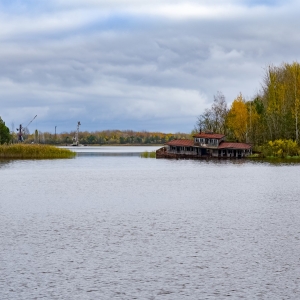Federal Water Tap, January 11: Army Corps Rule Cuts Stream Protections
The Rundown
The Army Corps finalizes a rule that will expose more stretches of small streams to development. The EPA releases a report on stream health that shows high nutrient concentrations in rivers. The EPA inspector general audit’s the agency’s microplastics research. The Supreme Court adds to its docket a lawsuit over a waste dump cleanup on Guam. And lastly, the Trump administration releases $3.7 billion for Puerto Rico’s water and sewer infrastructure.
By the Numbers
$3.7 billion: Grant to Puerto Rico for repairing water and sewer infrastructure that was damaged during Hurricane Maria in 2017. The grant will cover about 90 percent of project costs, the Associated Press reports.
News Briefs
Army Corps Nationwide Permits
The Army Corps of Engineers finalized a rule on January 4 that further retracts federal protections for the nation’s smallest streams.
The revisions to the nationwide permits, which authorize the filling and dredging of waterways, are one of a flurry of environmental deregulatory actions federal agencies are taking in the final days of the Trump administration, even though there is the possibility with a Democratic Congress that the Biden administration will reverse them.
The biggest change for streams in the rule change was shifting from a damage threshold based on length to one based on area. Before, projects eligible for a nationwide permit could not destroy more than 300 linear feet of stream. Now for 10 of the nationwide permits — including agricultural activities, mining, and commercial and residential developments — the standard is 0.5 acres.
Because an area-based threshold combines both the length of a stream and its width, small streams are now more vulnerable to development than they were in the past.
Damaging 0.5 acres of stream bed for a stream that is 6 feet across means allowing nearly 3,500 linear feet of the stream to be damaged — more than 10 times the previous limit and roughly two-thirds of a mile in length.
In context: In Trump Administration’s Final-Days Deregulatory Push, Army Corps Reduces Stream Protections
Studies and Reports
Stream Health Survey
The U.S. Environmental Protection Agency released a report showing the quality of the nation’s rivers and streams largely unchanged from an assessment six year earlier.
The report, which looked at biological, chemical, habitat, and human health indicators for 1.2 million miles of streams, found that many waterways suffer from too many nutrients, high fecal counts, and poor conditions for aquatic life.
Fifty-eight percent of assessed streams rated as poor for phosphorus, when compared with local benchmarks for healthy streams. Streams high in nutrients were twice as likely to have poor conditions for aquatic insects.
Streams rated poorly for PCB contamination, too. About 40 percent of assessed streams had fish with PCB concentrations above human health benchmarks.
The EPA is displaying the data, which was collected in 2013 and 2014, on a dashboard. The agency is also requesting comment on whether it should update its methods for conducting the stream survey.
EPA’s Microplastics Research
The EPA’s Office of Research and Development is in the “early stages” of its scientific inquiries into the human health risk of small plastic particles in the environment and has not conducted enough research to determine those risks, according to an audit from the agency’s internal watchdog.
A goal of ORD is to develop methods for characterizing and quantifying microplastics in sediment and water.
On the Radar
EPA Groundwater Pollution Guidance
The EPA is accepting public comments through January 12 on its draft guidance that defines when Clean Water Act permits are required for groundwater pollution.
Supreme Court Environmental Case
The U.S. Supreme Court will add to its docket a case involving responsibility for a $160 million environmental cleanup on the territory of Guam.
In the 1940s, when it controlled the island, the Navy created an unlined dump for municipal and military waste. The Ordot dump ended up contaminating groundwater and soil with toxic chemicals.
Guam officials wanted to recover cleanup costs through the Superfund process, but the EPA instead initiated proceedings through the Clean Water Act, which shielded the military from financial obligations.
The lawsuit seeks to force the Navy to contribute to the cleanup, even though Guam has already entered into a Clean Water Act settlement regarding the polluted dump.
Federal Water Tap is a weekly digest spotting trends in U.S. government water policy. To get more water news, follow Circle of Blue on Twitter and sign up for our newsletter.
Brett writes about agriculture, energy, infrastructure, and the politics and economics of water in the United States. He also writes the Federal Water Tap, Circle of Blue’s weekly digest of U.S. government water news. He is the winner of two Society of Environmental Journalists reporting awards, one of the top honors in American environmental journalism: first place for explanatory reporting for a series on septic system pollution in the United States(2016) and third place for beat reporting in a small market (2014). He received the Sierra Club’s Distinguished Service Award in 2018. Brett lives in Seattle, where he hikes the mountains and bakes pies. Contact Brett Walton





Leave a Reply
Want to join the discussion?Feel free to contribute!